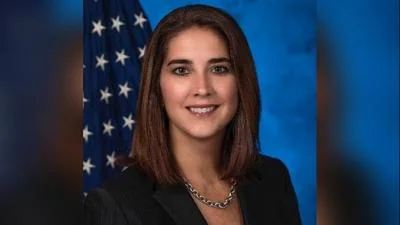Peter Moskos | John Jay
Peter Moskos | John Jay
A third large gathering of teenagers in Chicago’s Streeterville neighborhood this spring ended without incident, in contrast to two earlier meet-ups that resulted in injuries from gunfire and drew widespread concern from residents and officials.
The police, the Chicago Contrarian reported, were ready and waiting in on April 18 and that made all the difference over the first two in March.
Peter Moskos, John Jay professor and author of the recently published “Back from the Brink,” which chronicles New York City’s precipitous drop in crime in the 1990s, told Chicago City Wire all the evidence and common sense show that a police presence makes the biggest difference in crime prevention.
“People in the high-crime neighborhoods get it,” he said.” They want more police, and they want ShotSpotter. It’s the Lake Shore liberals who still want to believe that the police don’t make a difference. It’s racist.”
ShotSpotter is gunshot detection technology that Mayor Brandon Johnson discontinued last September. Since then, there have been multiple reports of gunshot victims being left untreated.
On April 18, CPD assigned an additional 200 officers to Streeterville—including, the Contrarian noted, Tactical Teams from several Police Districts and Priority Response Teams from around the city.
“While CPD still suffers from a serious shortage of personnel—the Department is down some 2,200 officers—if there is a lesson to be learned from April 18th in Streeterville, it is marshaling large formations of officers in areas in which disturbances are likely pay dividends,” the Contrarian report said.
Moskos cautions, however, that poor leadership lessens the effectiveness of having more police. Chicago has been subjected to eight years of soft-on-crime Cook County State’s Attorney Kim Foxx, and two years so far of anti-cop Mayor Brandon Johnson.
“The police want to do their jobs and stop crime,” said Moskos, who also served for a time as an officer with Baltimore Police Department. “But when they are the ones punished for policing and they see offenders back out on the street it’s a disincentive to do exactly that.”
He cited the banning of foot chases after the police chase and shooting death of a 13-year-old Adam Toledo in March 2021, and a pending change in CPD traffic stop policy with the shooting death of Dexter Reed in March 2024.
In his book, Moskos writes that while many candidates still advocate what the 1990s turnaround debunked: “the dominant sociological ‘root cause’ concept of crime, dismissive of any positive role of policing.”
Social issues like “job creation, income maintenance, medical care, housing, education, drugs, and firearms” did not change majorly in the 1990s, he writes. "iIn fact, poverty increased.”
The Contrarian points to a separate 2017 study out of Dartmouth College.
“An increase to the number of officers contributed to a decline in one murder for every 11 officers,” the study said. “While … the research concentrated in part on the impact of an Obama-era grant through the American Recovery and Reinvestment Act of 2009, he determined an additional officer is related to “1.39 fewer robberies, 9.6 fewer larcenies, and 3.5 fewer auto thefts.”






 Alerts Sign-up
Alerts Sign-up